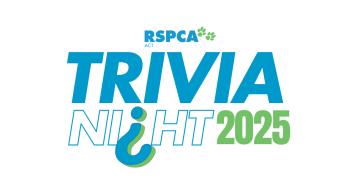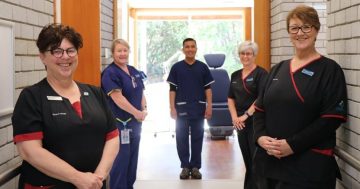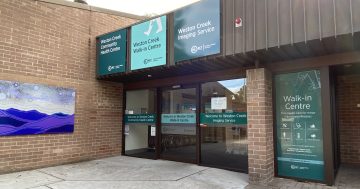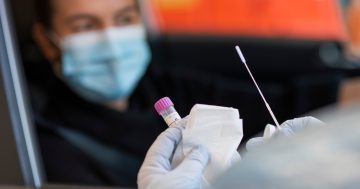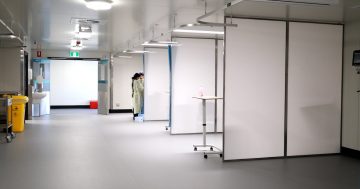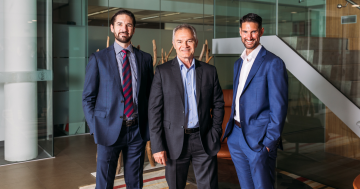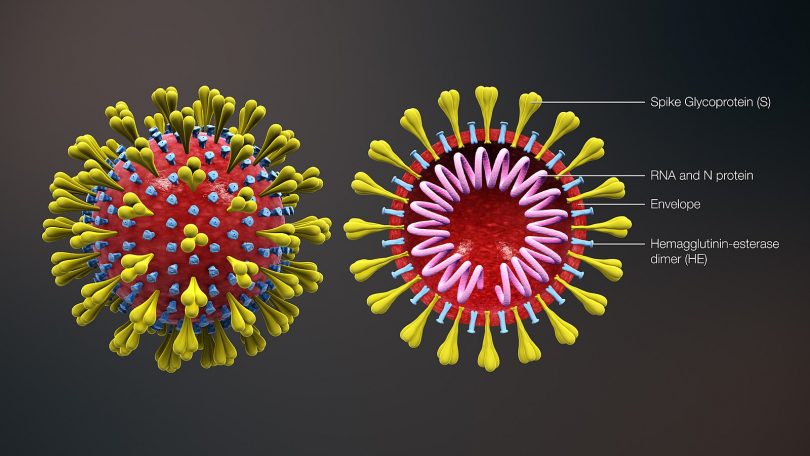
A medical animation of the coronavirus. Image: Wiki commons.
One of the trickiest things about the coronavirus pandemic is its similarity to many other common diseases. So, should you get tested if you come down with the sniffles?
Not necessarily: if everyone with mild respiratory symptoms is tested, it’s likely that our testing capacity will be overwhelmed.
Here in the ACT, one confirmed patient has been hospitalised and there is no evidence of person-to-person transmission at this time.
“The ACT Health team have contacted all identified close contacts of the confirmed case, and the small number of individuals are now also in self-quarantine in their homes,” a statement said on Friday.
There are reports of queues up to four hours long at the Weston Creek walk-in centre for virus testing, and people who do not meet the criteria can be turned away after waiting in line.
Australia’s Chief Medical Officer Brendan Murphy has written to GPs, saying, “Unfortunately, the extreme pressure on our personal protective equipment (PPE) stocks continues, and the situation regarding pathology test kits, reagents and swabs is deteriorating rapidly, with kits no longer being available in some regions of the country.
“Pathology collection centres have also experienced large backlogs in testing appointments in some parts of Australia, and emergency testing facilities have had to be established in some areas to ensure that urgent patients can get access to testing.”
The current criteria for being tested are as follows:
- Patients who have been travelling internationally in the 14 days before they started showing symptoms OR have been in close contact with a confirmed COVID-19 case in the 14 days before showing symptoms; AND have a fever OR an acute respiratory infection (eg shortness of breath, cough, sore throat) with or without fever.
- Healthcare workers who have direct contact with patients AND acute respiratory symptoms (eg shortness of breath, sore throat, cough) AND a fever greater than or equal to 37.5 degrees, whether or not they have had recent international travel.
- Patients who are critically ill with pneumonia (requiring hospital admission) where no cause has been identified, whether or not they have recent international travel.
The most common symptoms of COVID-19 are fever (88%), cough (68%), fatigue (38%), shortness of breath (18%), muscle or joint pain (15%), sore throat (14%), headache (14%), nausea or vomiting (5%), nasal congestion (5%) and diarrhea (4%). People will most commonly get symptoms around five to seven days after exposure.
Canberra medical practices say that people who suspect they have the virus should call ahead and seek advice rather than arriving unannounced at their GP’s office. Alternative arrangements include conducting a consultation via phone or internet web meeting and providing a test request to a participating pathology laboratory for a swab.
If you suspect you have COVID-19 and are being tested, the best advice is to wear a mask and avoid using public transport. Patients should self isolate at home until they are cleared.
If you are unable to contact your GP, or if you don’t have one, the preferred walk-in centre for assessment is the Weston Creek walk-in centre at 24 Parkinson Street, Weston, which is open between 7:30 am and 10:00 pm daily.
However, if you attend a different walk-in centre you will be seen. Staff at the walk-in centres are trained to assess and, if required, undertake the correct testing.
You can also call the Coronavirus Health Information Line on 1800 020 080. If you have serious symptoms, such as difficulty breathing, call triple zero (000). Let them know you are worried you may have COVID-19.
If you have had contact with someone who has been quarantined but has not tested positive, you do not meet testing criteria. If that person tests positive, you may then become eligible for testing depending on the type of contact, duration and timing.
The infectious period for coronavirus is still not clear, although the current precautionary approach is to consider patients to be infectious 24 hours before the onset of symptoms. If you have self-isolated for 14 days and continue to feel well, there is no need to obtain medical clearance before returning to work or school.
As of Sunday afternoon, following a meeting of the new National Cabinet (made up of the Prime Minister, Premiers and Chief Ministers in response to coronavirus), all travellers coming into Australia will need to self-isolate for 14 days, and all cruise ships will be banned from docking in Australia for at least a month.
For further information, visit the Department of Health.











